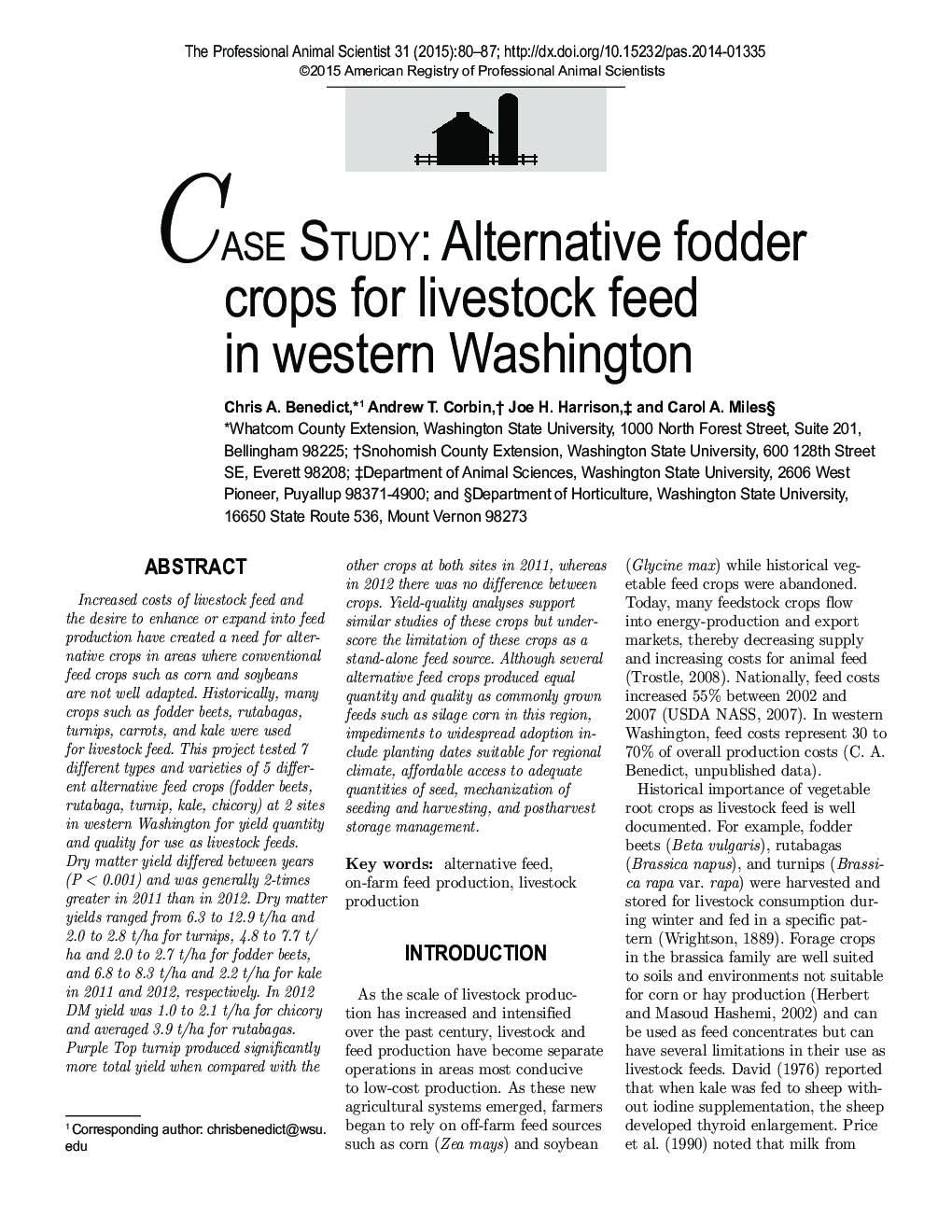| Article ID | Journal | Published Year | Pages | File Type |
|---|---|---|---|---|
| 10161839 | The Professional Animal Scientist | 2015 | 8 Pages |
Abstract
Increased costs of livestock feed and the desire to enhance or expand into feed production have created a need for alternative crops in areas where conventional feed crops such as corn and soybeans are not well adapted. Historically, many crops such as fodder beets, rutabagas, turnips, carrots, and kale were used for livestock feed. This project tested 7 different types and varieties of 5 different alternative feed crops (fodder beets, rutabaga, turnip, kale, chicory) at 2 sites in western Washington for yield quantity and quality for use as livestock feeds. Dry matter yield differed between years (PÂ <Â 0.001) and was generally 2-times greater in 2011 than in 2012. Dry matter yields ranged from 6.3 to 12.9Â t/ha and 2.0 to 2.8Â t/ha for turnips, 4.8 to 7.7Â t/ ha and 2.0 to 2.7Â t/ha for fodder beets, and 6.8 to 8.3Â t/ha and 2.2Â t/ha for kale in 2011 and 2012, respectively. In 2012 DM yield was 1.0 to 2.1Â t/ha for chicory and averaged 3.9Â t/ha for rutabagas. Purple Top turnip produced significantly more total yield when compared with the other crops at both sites in 2011, whereas in 2012 there was no difference between crops. Yield-quality analyses support similar studies of these crops but underscore the limitation of these crops as a stand-alone feed source. Although several alternative feed crops produced equal quantity and quality as commonly grown feeds such as silage corn in this region, impediments to widespread adoption include planting dates suitable for regional climate, affordable access to adequate quantities of seed, mechanization of seeding and harvesting, and postharvest storage management.
Keywords
Related Topics
Life Sciences
Agricultural and Biological Sciences
Animal Science and Zoology
Authors
Chris A. Benedict, Andrew T. Corbin, Joe H. Harrison, Carol A. Miles,
